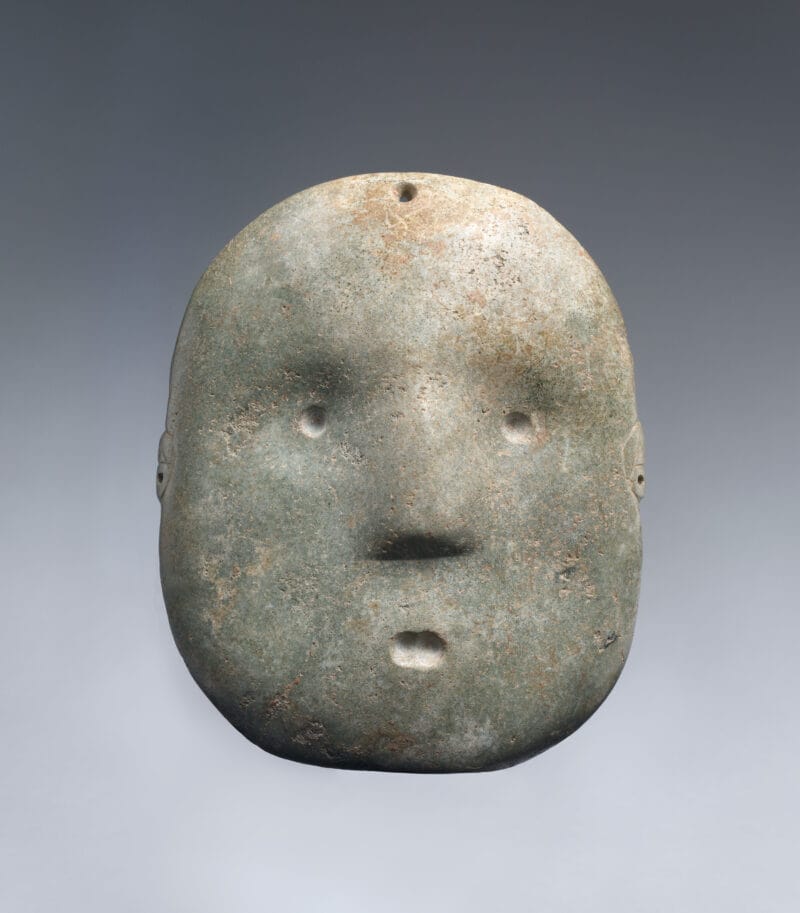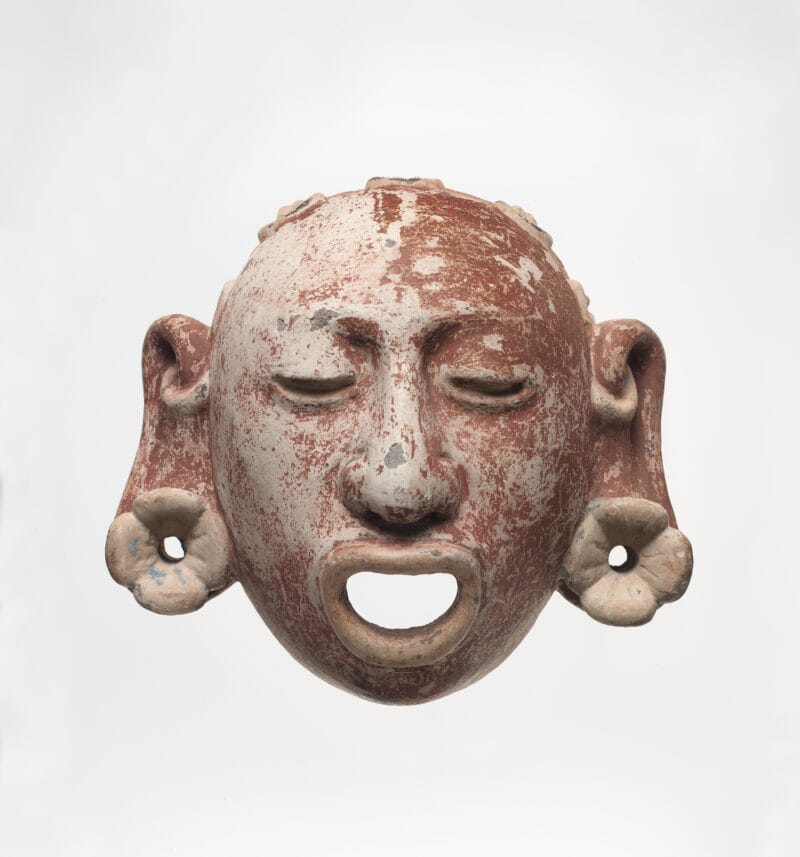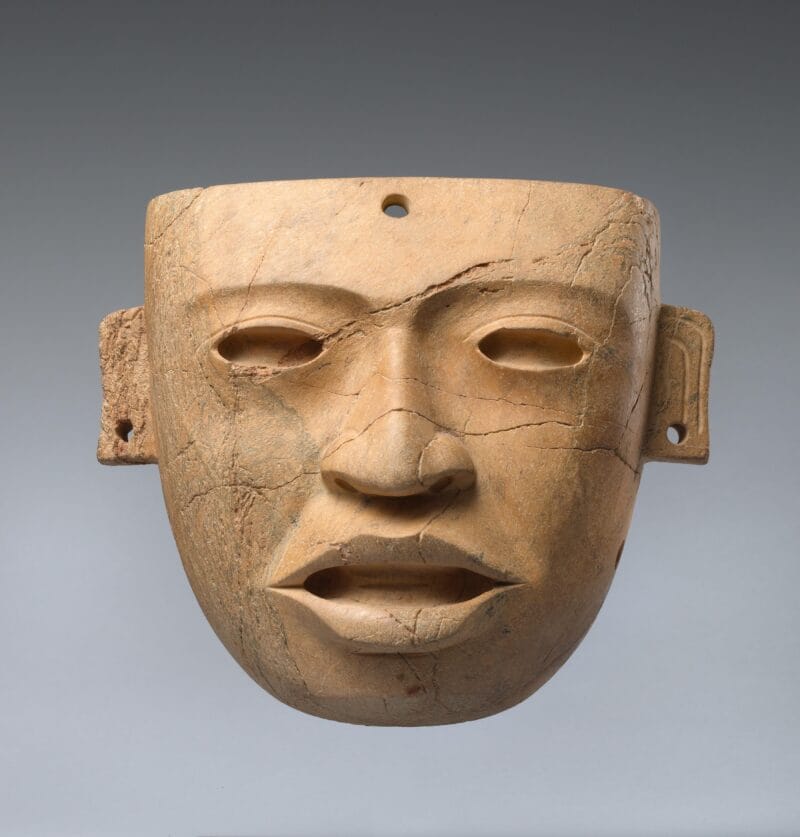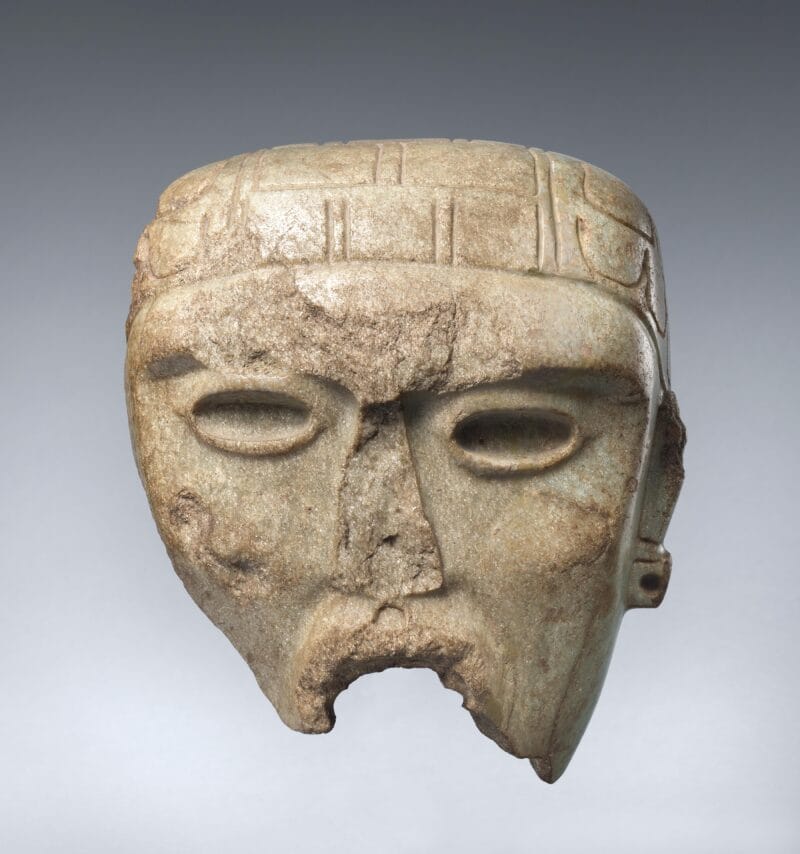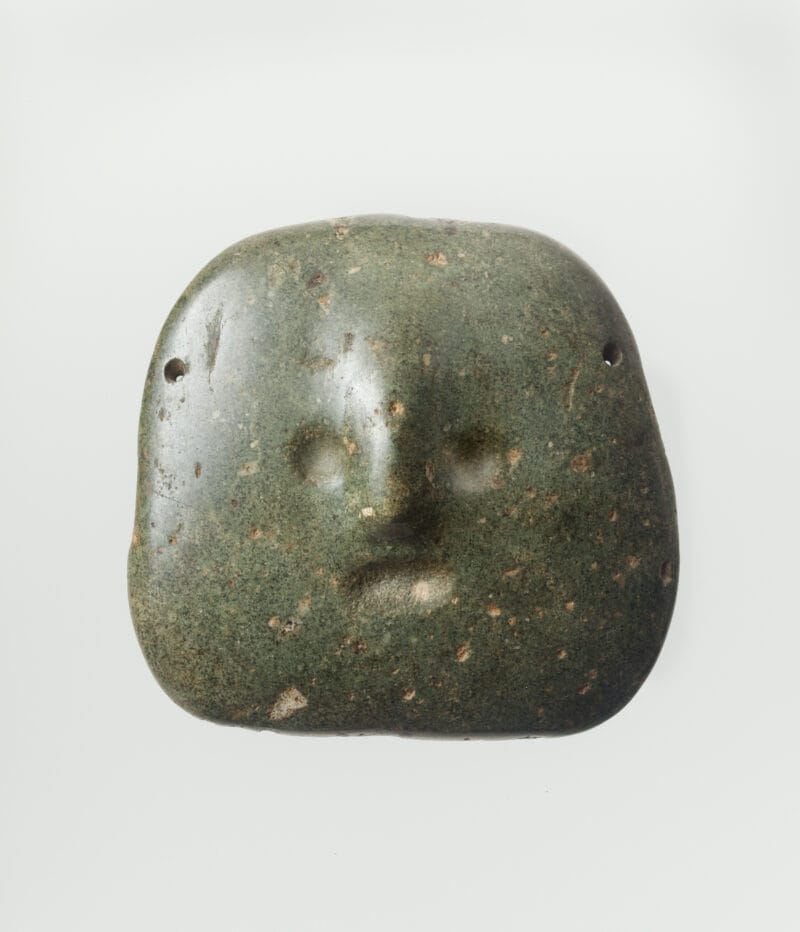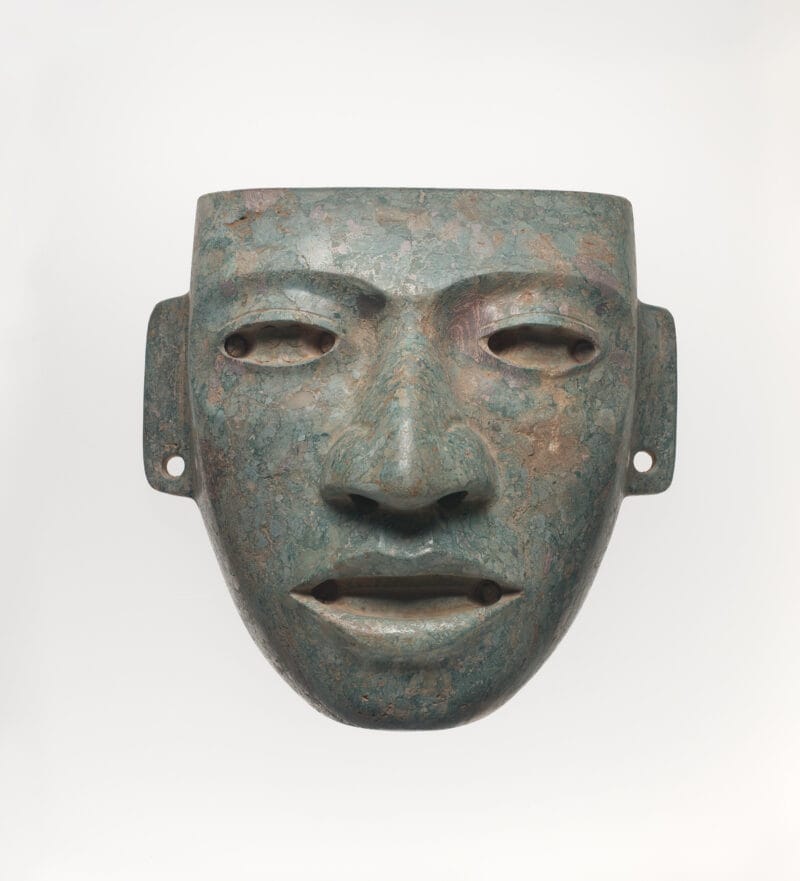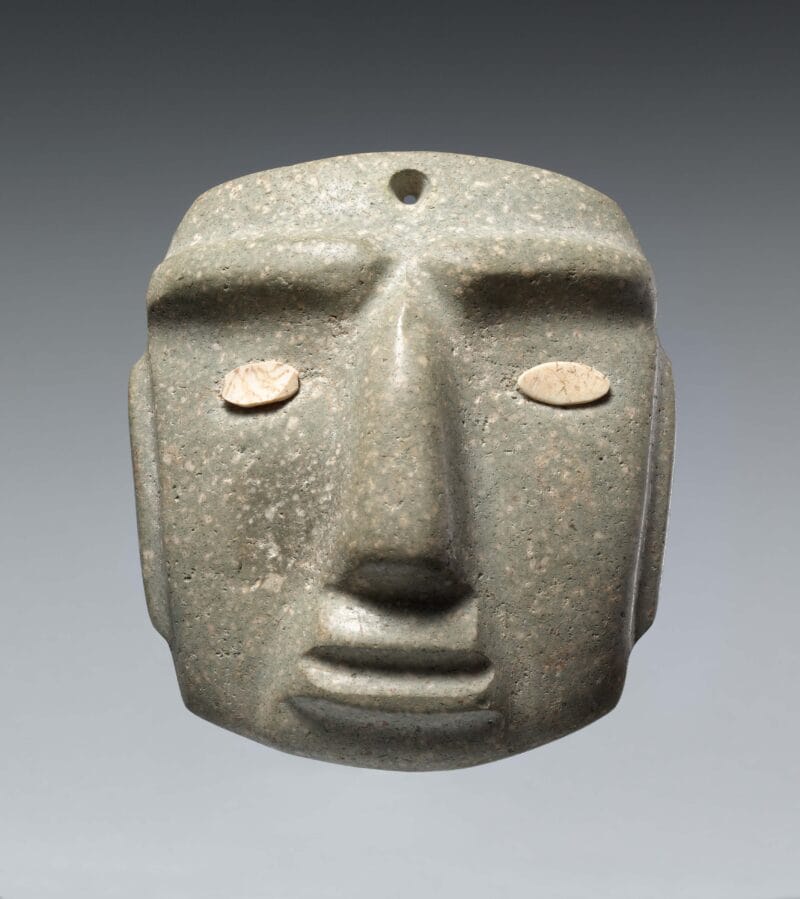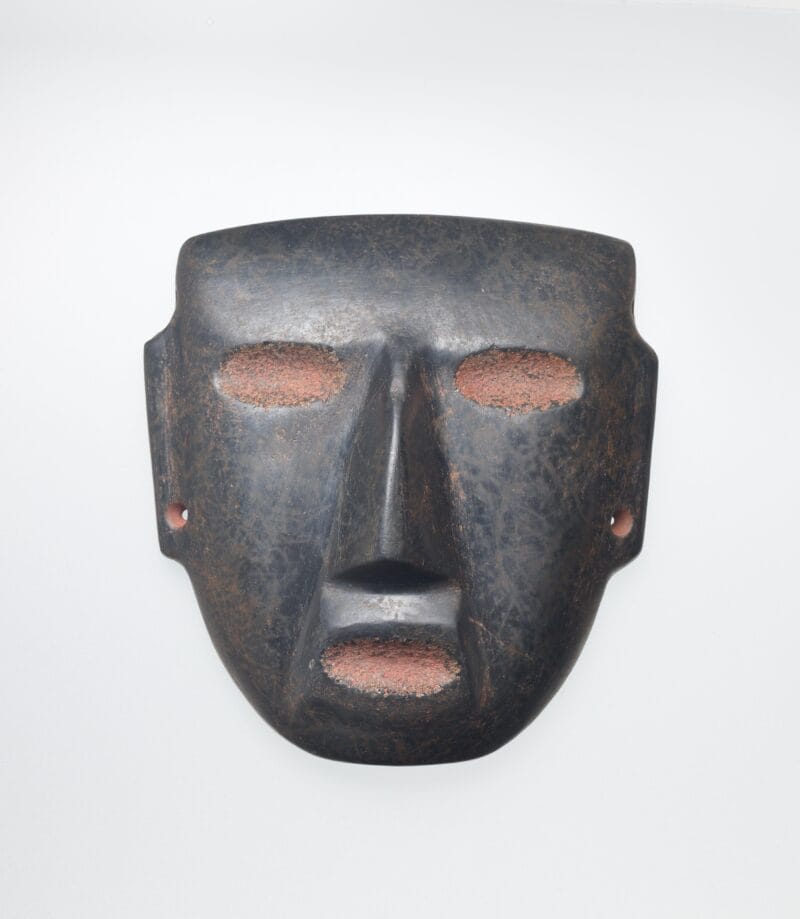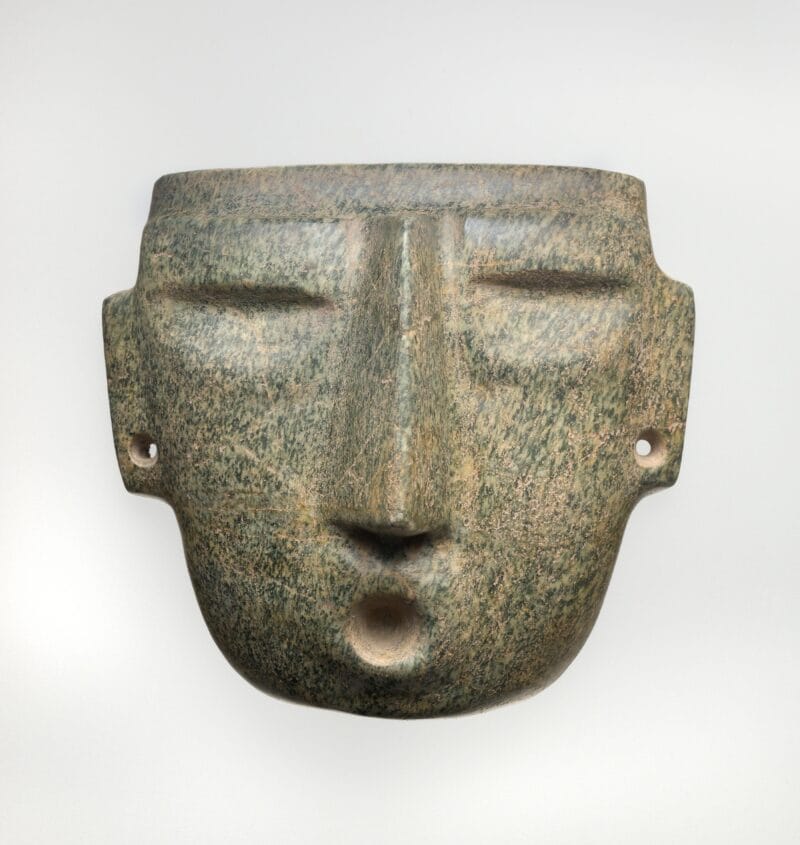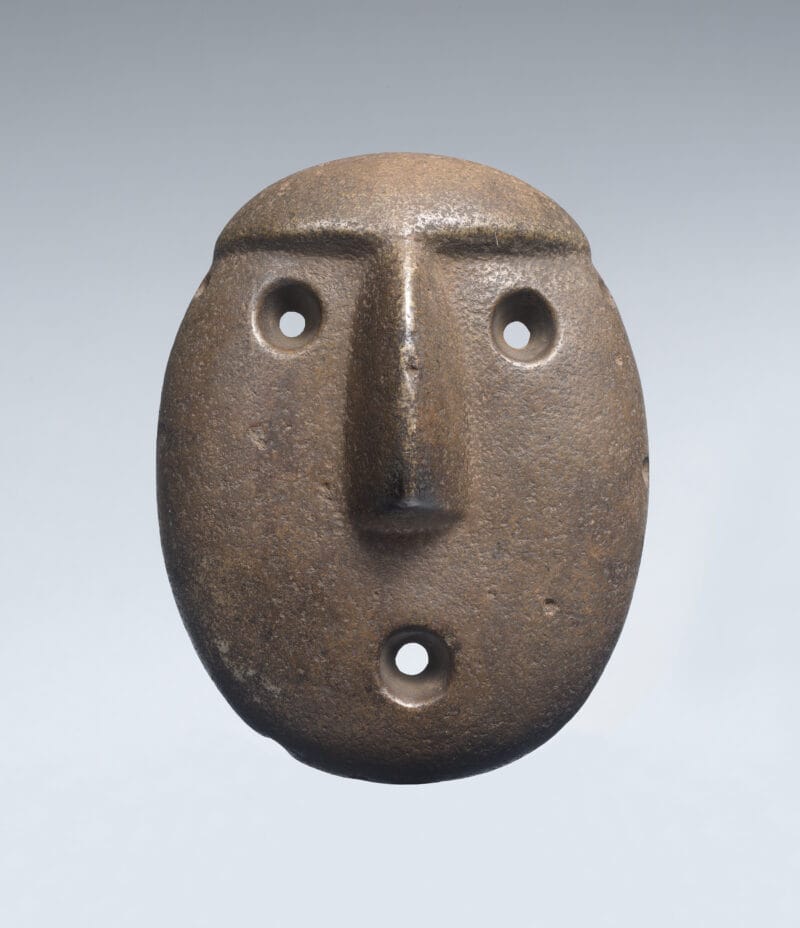
About the Object
The face mask seen here was carved and polished from an unidentified brown stone with abstract human features. It has a rounded head with a relatively flat face, prominent eyebrows, large prominent nose, and hollowed-out eyes and mouth. This may mean that the work was supposed to be worn during rituals, or the mask could have been associated with a burial.
Additional Information
Originating in what is today northern Argentina and Chile, the Alamito culture began to create the first planned communities in this area of the Andes featuring large mounds with platforms and central plazas. Scholars argue that these centers display complex planning related to ideas concerning cosmology and social differentiation. The Alamito also traded with major centers for the ingestion of hallucinogenic substances, linking them with other major centers such as San Pedro de Atacama, today in Chile. They are also known to have worked with metal; raised crops such as maize, potatoes, beans, and quinoa; raised camelids such as llamas or alpacas; and engaged in long-distance caravans.
[Throckmorton Fine Art, New York, NY];
Related Objects
You may also be interested in
Aimé Iglesias Lukin

Carmen C. Bambach

Iman Issa

